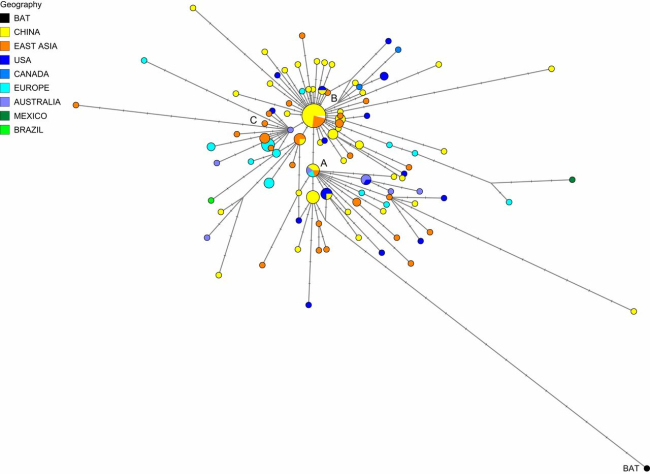COVID-19's journey across the world mapped by scientists
The COVID-19 virus has mutated(变异 biànyì) as it has spread(传播 chuánbō), research(研究 yánjiū) has found, allowing scientists to track its origins(源头 yuántóu) and potentially predict future trends(趋势 qūshì).
What is believed to be the original strain of the virus, most closely related to that found in pangolins and bats, is termed by the scientists as "Type(类 lèi) A." Outside China, this variation is commonly found in the U.S. and Australia. Type A appears to have mutated into "Type B," which then evolved into a "Type C," which is the predominant strain found in Europe.

The scientists have tracked COVID-19's movement. [Photo: Peter Forster, Lucy Forster, Colin Renfrew, and Michael Forster/PNAS]
The scientists noticed that Type B was almost exclusively(只 zhǐ) found in East Asia, leading them to question whether people living outside the region had some kind of resistance to it.
The study, conducted by scientists from the University of Cambridge, the University of Kiel, the German Institute of Forensic Genetics and Fluxus Technology and Lakeside Healthcare in the UK, can be used to create a map of the coronavirus's journey around the world.
The research was published in the Proceedings of the National Academy of Sciences.
Subsequent work, which has not been peer reviewed, allowed the researchers to conclude that the virus's first transmission to humans was between the middle of September and early December 2019.
重点词汇 Key word:
类
<名词 n.> kind; type; class
E.g. Tā bùshì nà yī lèi rén.
他不是那一类人。
He's not that kind of person.
<动词 v.> resemble; be similar to
E.g. Liǎng zhě yǒu lèisì zhī chù.
两者有类似之处。
There are some similarities between the two.